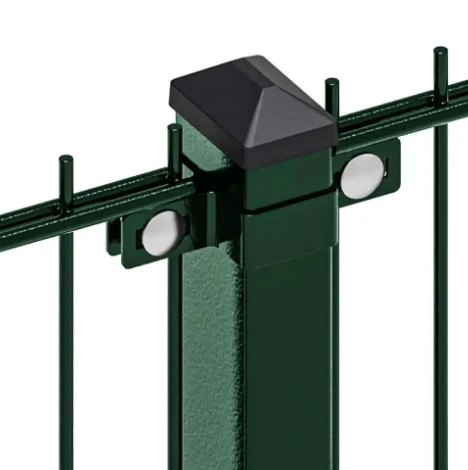Understanding the optimal voltage for cattle fences is crucial for farmers and ranchers aiming to ensure livestock safety and effective farm management. A well-designed cattle fence, operating at the right voltage, not only keeps the animals within their designated area but also deters predators and prevents livestock stress, ensuring their well-being and productivity.

The voltage on electric cattle fences typically varies between 2,000 and 10,000 volts. This range is selected to balance effectiveness with safety. Confusion often arises among new farm operators regarding which voltage level is suitable for their specific cattle breeds and farm conditions. Let's delve into the specifics to help you make an informed decision based on real-world applications, professional insights, and authoritative guidelines.
To determine the appropriate voltage, start by considering the type of animals being managed. Larger livestock, such as cattle, generally require higher voltage levels compared to smaller animals. For most cattle, a minimum voltage of 4,000 volts is recommended to ensure they receive a memorable shock that deters them from challenging the fence again. This voltage level is both humane and effective, as it delivers a short, sharp electrical pulse without causing lasting harm.

However, the voltage read on the fence tester doesn't always reflect the energizer's setting. Factors like soil moisture, vegetation touching the fence, and physical footage of the wire can influence the effective voltage along the fence line. For instance, during dry conditions, the conductivity of the soil decreases, potentially reducing the fence's effectiveness. To counteract this, farmers should consider higher voltages or modify their grounding systems to maintain operational reliability.
The quality and maintenance of the fencing infrastructure also play pivotal roles. Periodically checking the connections, ensuring the absence of vegetation growth on the wires, and verifying the energizer's functionality is critical. Conduct regular tests using a reliable fence tester to detect voltage drops which could indicate needed repairs or adjustments.
Professional expertise suggests investing in advanced, modern energizers that automatically adjust the voltage based on the detected load and environmental conditions. They often include features such as remote monitoring and diagnostics, which provide farmers with actionable insights into their fence's performance and health.
cattle fence voltage
Authoritative sources like agricultural extensions and fence manufacturers recommend a multi-strand fencing approach for cattle. By utilizing multiple electrified wires at different heights, farm managers can effectively contain various livestock breeds and ages, creating a deterrent for both cattle and potential predators.
Trustworthiness in electric fencing is also reinforced when utilizing proper grounding systems. It is estimated that around 80% of fence performance issues stem from poor grounding. A standard setup would involve multiple ground rods spaced several feet apart, ensuring consistent circuit completion and optimal performance.
Furthermore, anecdotal evidence from veteran ranchers emphasizes the importance of fence visibility. Despite its electrification, a physical barrier needs to be evident to the animals. This can be achieved by using high-visibility wire or flagging tape to prevent collision and entanglement.
As you integrate these expert guidelines into your farm's fencing system, remember that consistent monitoring and proactive maintenance are key. By doing so, you create a controlled environment that prioritizes livestock safety while fulfilling operational efficiency expectations.
Implementing a cattle fence with the appropriate voltage not only elevates your farm management practices but also aligns with industry best practices. This ensures your farming operation remains competitive, compliant, and efficient in safeguarding livestock and resources.
























